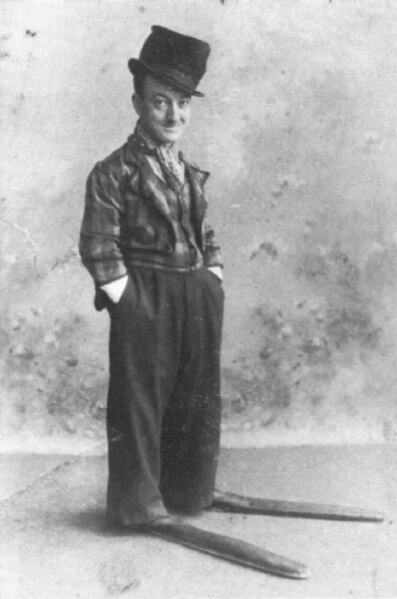Loie Fuller
A pioneer of both dance and theatrical lighting technique, Fuller influenced generations of dancers who followed her. Fuller brought her experience as a burlesque skirt dancer to the theater and began to experiment with sheer silk costumes that were illuminated by the stage lights. The stage lights were also rigged to change colors using different colored gels. As filmmakers began to experiment with subject matter, they sought to add color to their works.
Fuller and her followers made for excellent subjects. Those who were fortunate enough to see them perform in person were familiar with the lights that played off their elaborate costumes. And those who hadn't could get a sense of the performance as the filmmaker hand tinted the frames of the film, alternating colors as they went. the results may appear primitive at times, but they are still stunning.
There are a few films that claim to be of Loie Fuller, but it has been debated that it is not her. An 1896 film by the Lumiere films may depict Fuller, or just one of her students. Regardless, this gives us a look into the world of the Lumieres and how they approached the subject of capturing movement and adding color.
This film from 1902, entitled "Segundo de Chomon," has a title card, claiming Loie Fuller as its star. This film is by Pathe and attempts to attach something of a narrative to it.
One of Fuller's students, Annabelle Whitford, became a dancer and an actress in her own right. Like Fuller, Whitford's dances and films both emphasized the use of lighting and costume. Whitford became a subject of Edison and Biograph films, appearing in at least nine films between 1894 and 1897.
Like Fuller, Whitford performed 'serpentine' and 'butterfly' dances. The film below features several of Whitford's dances captured on film by Edison films.
Guy and Gaumont
Of course, Edison, Biograph, Lumiere and Pathe weren't the only studio/filmmakers to take advantage of the serpentine fad. Another French filmmaker, Alice Guy -- who would go on to have an impressive career herself -- also captured the popular dance on film and, in some films, experimented with hand tinting.
The film below by Guy depicts dancer Lina Esbrard and is from 1902.
Gaumont studios got in on the act filming this unnamed dancer and using beautiful, vivid colors to add new life to the subject. This film is arguably more dramatic than the others -- note the wind machine to add extra movement.
Serpentine Satire
Of course, as soon as film was born so, too, was comedy. This meant that not even the serpentine was safe.
In one film in particular, Tich appears in drag and impersonates Fuller and Whitford with hilarious results.
There remains something undeniably charming about these fad-driven, hand-tinted gems. Certainly, the earliest works by Edison, Guy and the rest are rather primitive and even difficult to watch at times. But their earnest attempts to capture beauty on film, I believe, are far worthier of our attention than any of the dreck Michael Bay and his ilk continue to release.








No comments:
Post a Comment